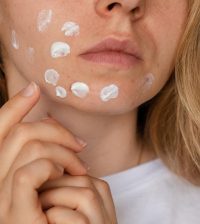- HHS Launches New Autism Study Despite Experts’ Concerns
- CDC Urges Extra Measles Shot For Some U.S. Travelers Amid Outbreak
- Showerhead Water Limits Rescinded as Trump Targets Household Appliances
- Most Women Aren’t Clear When Menopause Might Start
- New Visual Test For Autism Could Aid Earlier Diagnosis
- Half-Million Children Could Die If U.S. AIDS Relief Is Dropped
- Seasonal Allergies Likely To Grow Worse Under Climate Change
- First Baby Born From Robot-Controlled IVF
- Eviction Bans Linked To Drop In Child Abuse Reports
- Bausch + Lomb Issues Recall of enVista Lenses Used in Cataract Surgery
How to Control Mold, Avoid Allergies

Mold can grow almost anywhere. But limiting moisture can help prevent it from developing indoors and causing health problems, according to the U.S. Environmental Protection Agency.
If mold develops it must be removed, because it can cause allergic reactions, asthma and other breathing problems.
Use water and detergent to remove mold from surfaces and dry affected areas completely afterwards. If mold develops on absorbent materials, such as ceiling tiles, they may need to be replaced.
To prevent mold from returning, it’s important to get rid of the water or leak that’s causing it to grow. Indoor humidity or moisture must be reduced to no more than 60 percent. To do this, the EPA offers these tips:
- Provide ventilation to the outside for clothes dryers, bathrooms and other areas that produce moisture.
- Use air conditioners and de-humidifiers.
- Use exhaust fans while cooking, washing dishes or cleaning.
- If building materials or furnishings get wet, clean and dry within 48 hours.
- Insulate cold surfaces, such as windows, exterior walls, roofs and floors to prevent condensation.
More information
The U.S. Centers for Disease Control and Prevention has more about mold.
Source: HealthDay
Copyright © 2025 HealthDay. All rights reserved.










